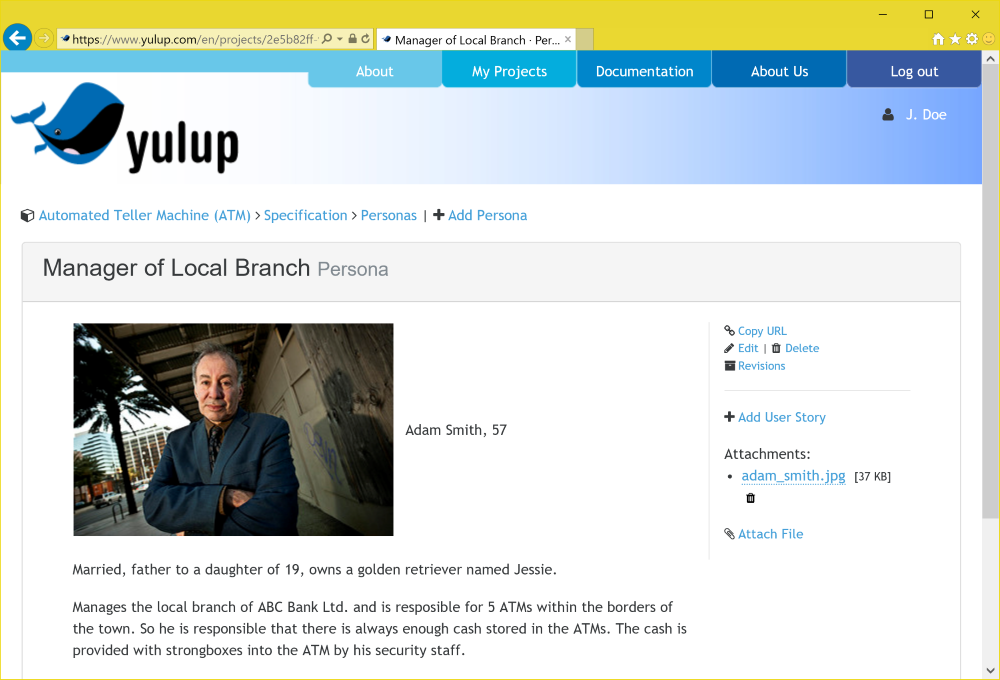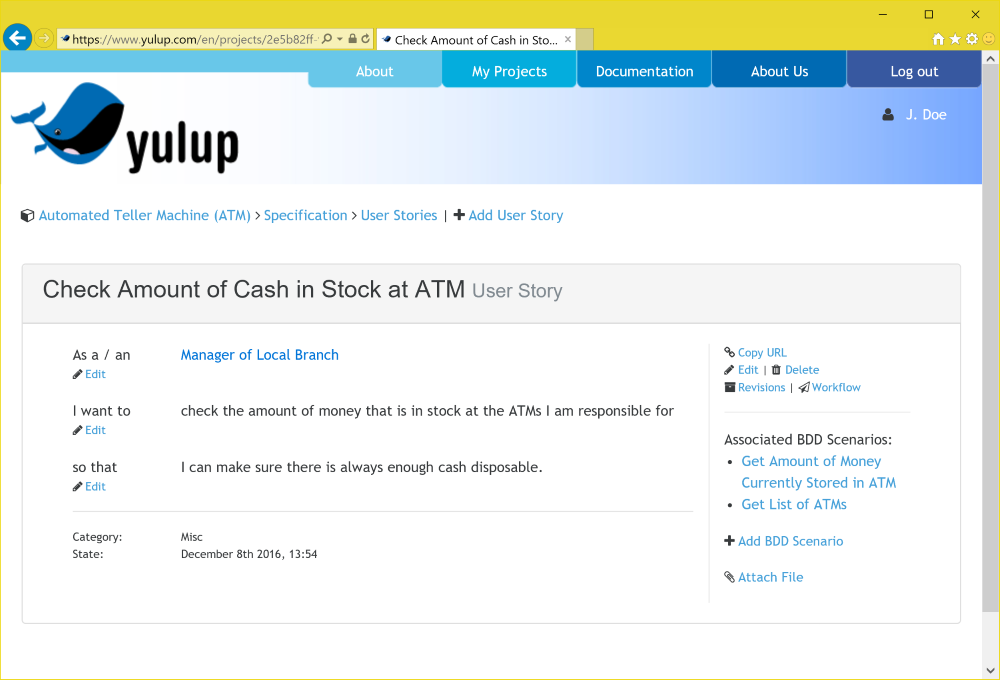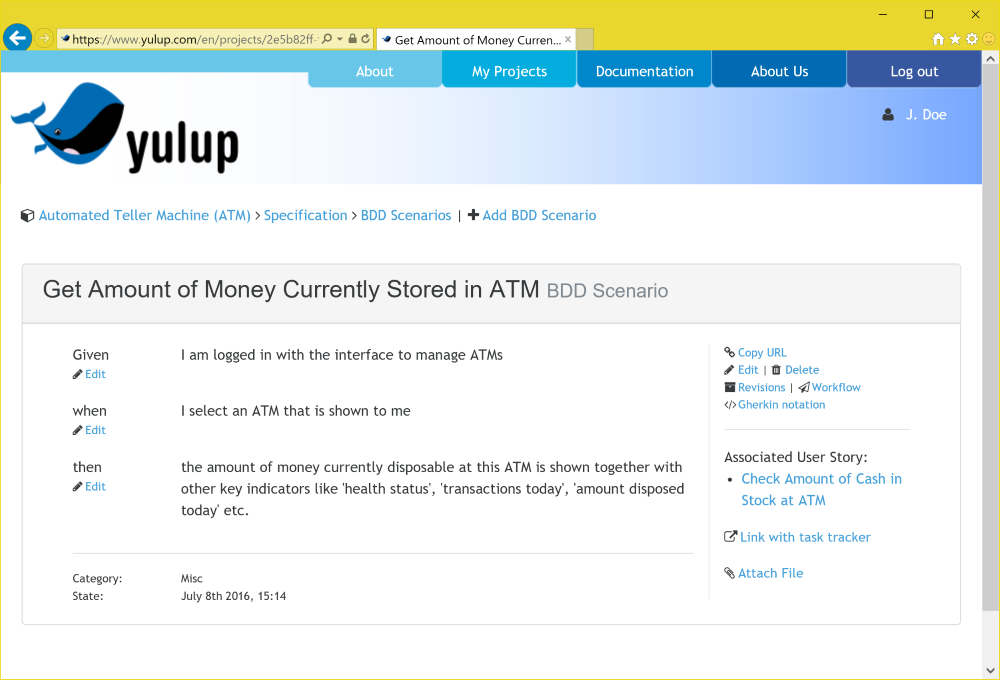Yulup recommends a top down approach for requirements engineering. First you define some Personas. describing who is going to use the software which you want to build. Then you write the User Stories, which are describing what you want to build and why this functionality is necessary. Finally you write the BDD Scenarios, which are describing the behaviour of your software in as much detail as possible. You can do iterations and add or amend Personas, User Stories and BDD Scenarios at any time. The prioritization is done by the story mapping approach.
A Persona is an archetype of a specific group of users of your future software.

Personas help you, to see the requirements for your future software from the point of view of your users.
Now you can depict typical activities with your future software for each of your Personas. Every User Story covers a single such operation. They obey an easy scheme (Who does what and why). In a more formal way the pattern is:
"As a/an <role> I want to <goal/desire> in order to <benefit>"
A User Story describes what a Persona wants to do with the software to be built and what the goal of the activity is — but without digging too much into details. Details will be defined later by using BDD Scenarios.

BDD Scenarios do describe in detail, how a certain function under certain conditions should work. BDD Scenarios also define the acceptance criteria for User Stories. BDD stands for Behaviour Driven Development that is also somewhat related to "test driven development". Yulup enables your team to write down the results of the requirement engineering or specification phase in a manner that is easy to understand for every person involved. And to use them during all phases of the project. If needed, you can adopt them on the fly.

In contrast to User Stories (Who does what and why) BDD Scenarios determine the "how". You define, what exactly does take place, if in a given situation an action is being triggered. BDD Scenarios are built up according to an easy, pre-defined scheme, too:
"Given <precondition>, when <action>, then <result>"
Typically, a handful of BDD Scenarios are necessary to specify a User Story.
Yulup supports you in doing a great job with a lot of features!
Try Yulup with a free account for an unlimited period of time.
(There is no obligation and no credit card required.)
About Yulup
Made with in Zurich: